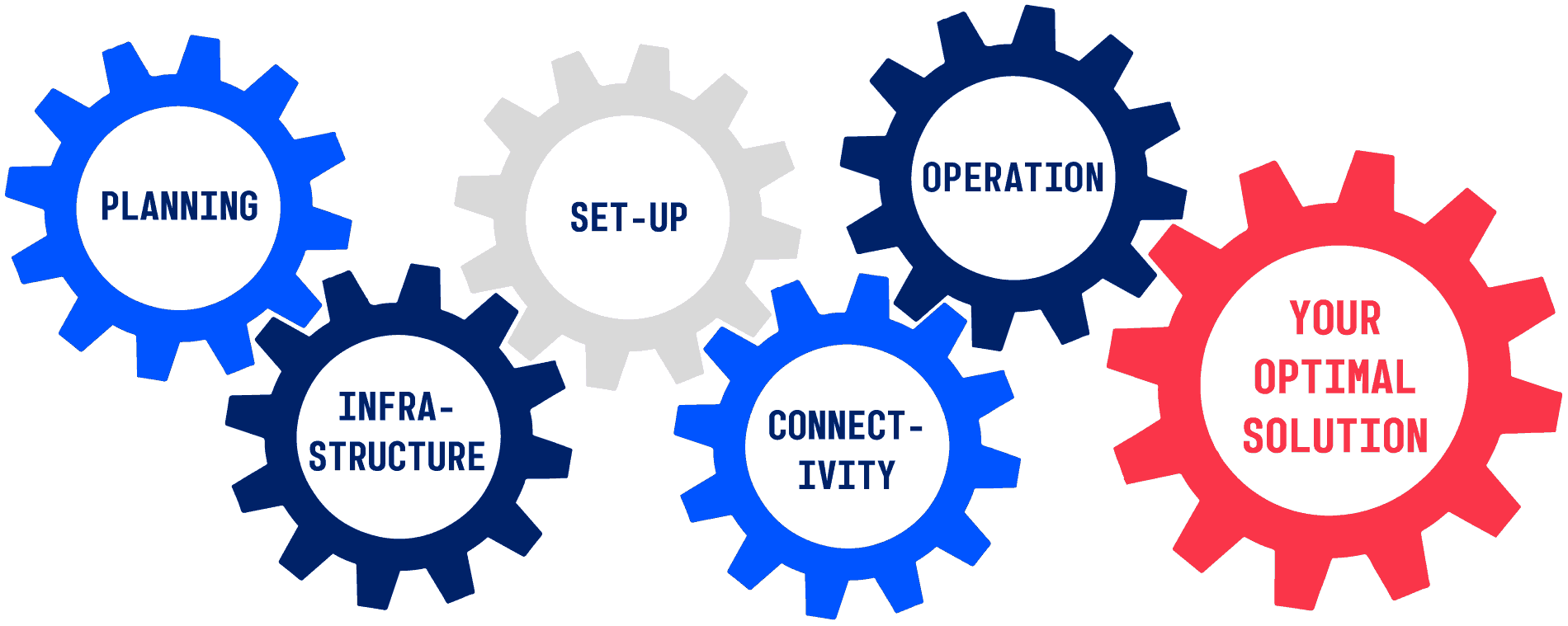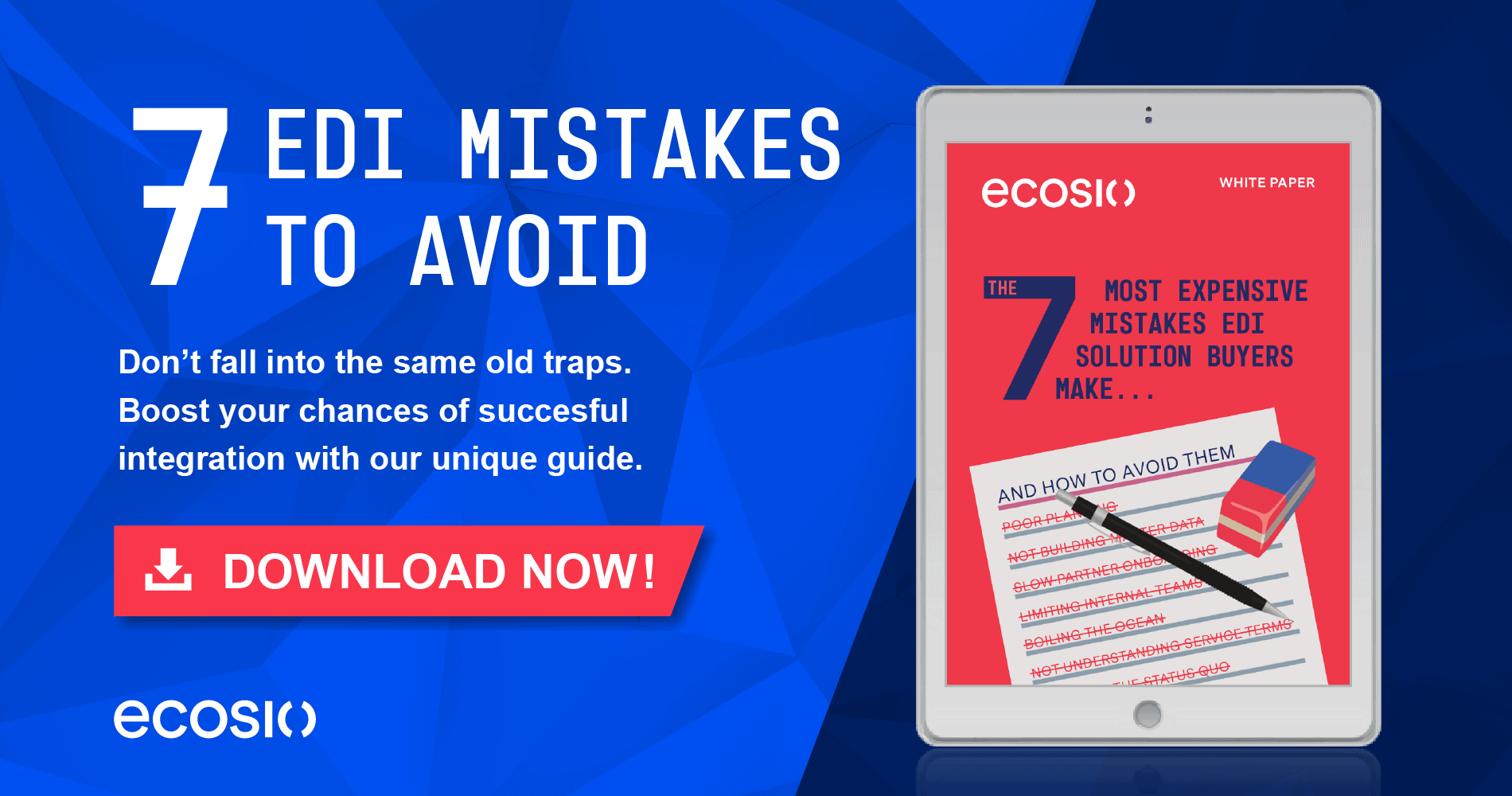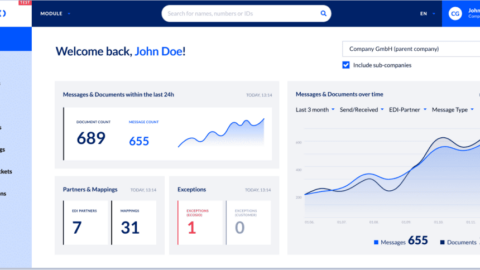In order to achieve a fully automated and efficient trading partner cycle via EDI, it’s important to consider every aspect of your proposed new system before an EDI vendor is selected and implementation started. Given the multi-faceted nature of EDI and the breadth of its impact across your supply chain, however, it is easy to overlook key factors when planning a change in your document exchange strategy
For those approaching migration or implementation projects, this article should help to ensure you don’t experience negative consequences in the future due to lack of foresight in certain areas. We have distilled successful EDI implementation into 5 key components – planning, infrastructure, set-up, connectivity and operation – each of which we will explore in more detail below. To achieve a successful, efficient and future-proof solution all 5 of these components should be considered. How effectively you consider and execute on these 5 key components determines the extent to which you will realise cost savings and accelerated delivery speed.

1) Planning
As with any significant project, planning is essential to eventual success. After all, in order to achieve the best solution for you, it makes sense that you first identify what an optimal EDI system might look like in practice according to your specific context.
Though you may not have EDI expertise, you know your partner trading cycle (and business goals) better than anyone external, which is why we recommend that an experienced internal stakeholder is involved in this stage and supports you throughout. Ideally the planning stage should be led by an internal team with support from an experienced EDI vendor, who will be able to suggest improvements and cost-saving optimisations you may not have been aware of.
2) Infrastructure
The next key thing to consider is the type of infrastructure you want to use. Do you want to move to a cloud-based managed service or do you think you have sufficient internal expertise and resources to handle EDI on your own, for example? If the latter, are you aware of the extent to which this choice will impact your company’s capacity for future growth? Very few businesses’ EDI needs remain constant for a long time, and implementation of a flexible system can ensure you are not held back by your data exchange processes in the months and years to come.
3) Set-up
Third is looking into the practicalities of how the system will be constructed. Who will build the mappings and conduct thorough testing? Understanding who will do the heavy lifting here is key, as having to handle much of this internally can be extremely time-consuming. While EDI solutions may appear similar to the untrained eye, they often differ greatly when it comes to how hands-on they are during the set-up phase. Given that the success of the testing and implementation phases will dictate the efficiency and reliability of your system going forward, it’s important to select an EDI vendor that meets your specific needs.
For a detailed look at what an implementation project looks like, our article “What Exactly Does an EDI Implementation Project Involve?” on this topic.
4) Connectivity
Fourth is identifying how you will communicate with and connect to your trading partners. Again this will determine how to allocate resources and responsibility as this can be the most time-intensive part of the EDI onboarding process, especially if you have a lack of in-house EDI expertise. Often the work required for this component is underestimated, with many companies experiencing drawn-out supplier onboarding times as a result. However, by allocating sufficient internal resources or opting for an EDI vendor that is able to manage the entire onboarding process, from first contact to go-live, expansion of (and communication with) your trading partner cycle can be quick and easy.
5) Operation
Finally, once your EDI solution has been set up and your current partners onboarded, your systems still need to be monitored and maintained to make sure that messages are being sent and received correctly. Given the potentially expensive knock-on effects of supply chain data exchange issues, from delays and chargebacks to lost orders and damaged supplier relationships, the importance of having a system in place to catch and resolve issues quickly cannot be overstated.
For a detailed breakdown of how much work is done by different EDI providers, download our infographic on this topic.
How ecosio can help
Unlike other EDI vendors, whose packages in reality place great burden on internal teams, because they only partly cover the above components, ecosio provides value at each of the 5 steps mentioned above. Through our comprehensive service, which includes building and testing all required mapping and routing, providing a dedicated project manager to streamline partner onboardings, and round the clock monitoring, we ensure that minimal internal effort is required to achieve an optimal solution. In short, our EDI experts take care of everything so you can focus on what you do best! This way, we not only save you time and money, but also stress.
At ecosio we are experts at helping companies to optimise their B2B data exchange. Whether you are looking to consolidate complex existing processes into one unified cloud-based system, or are interested in implementing an EDI solution for the first time, our flexible Integration Hub and managed, modular services offer the perfect answer to your problems.
Deeper, faster, smarter, cleaner.
Find out more
For more information on ecosio’s services and to find out how we can help your business in particular, click here to arrange a call with one of our experts today.















